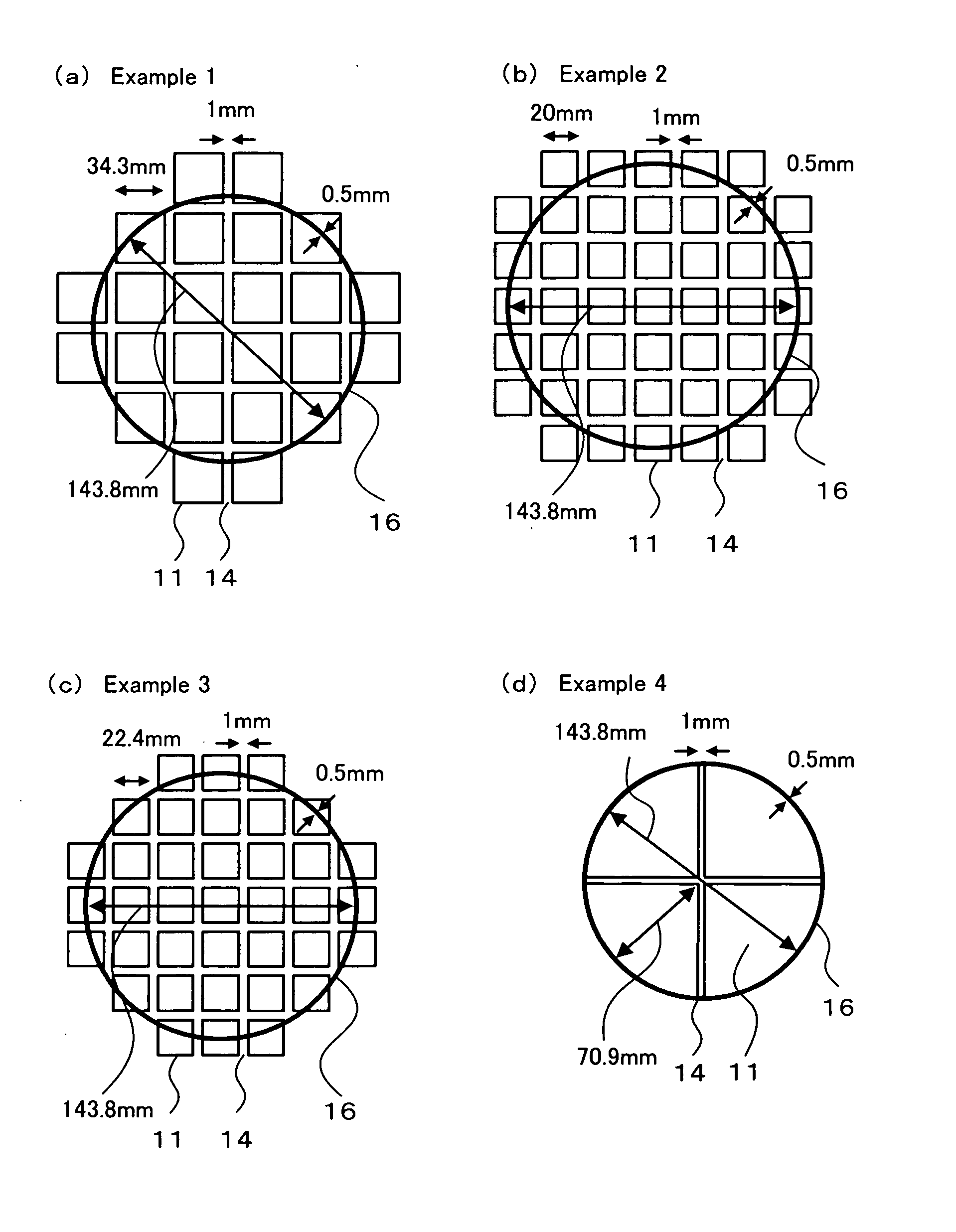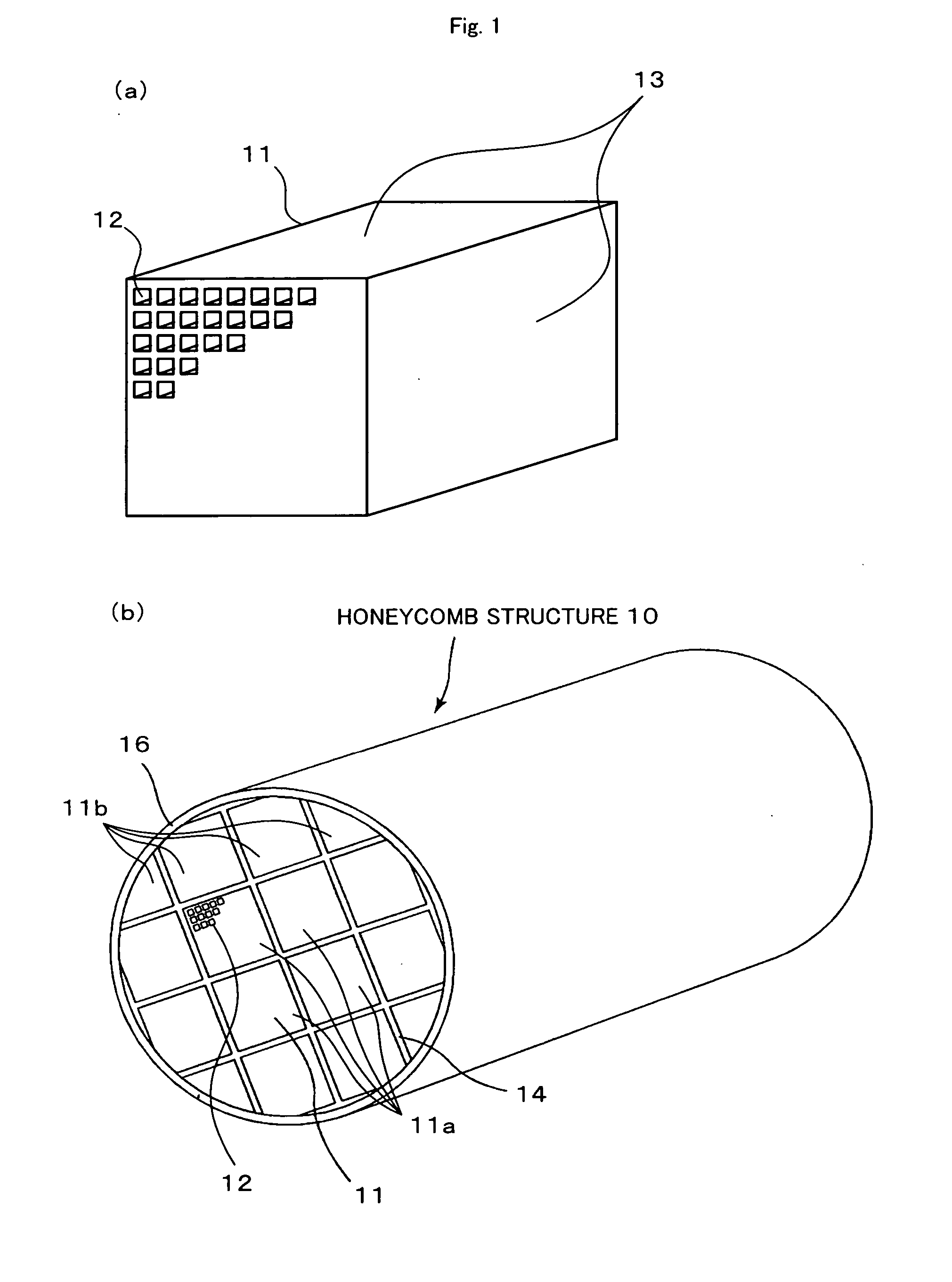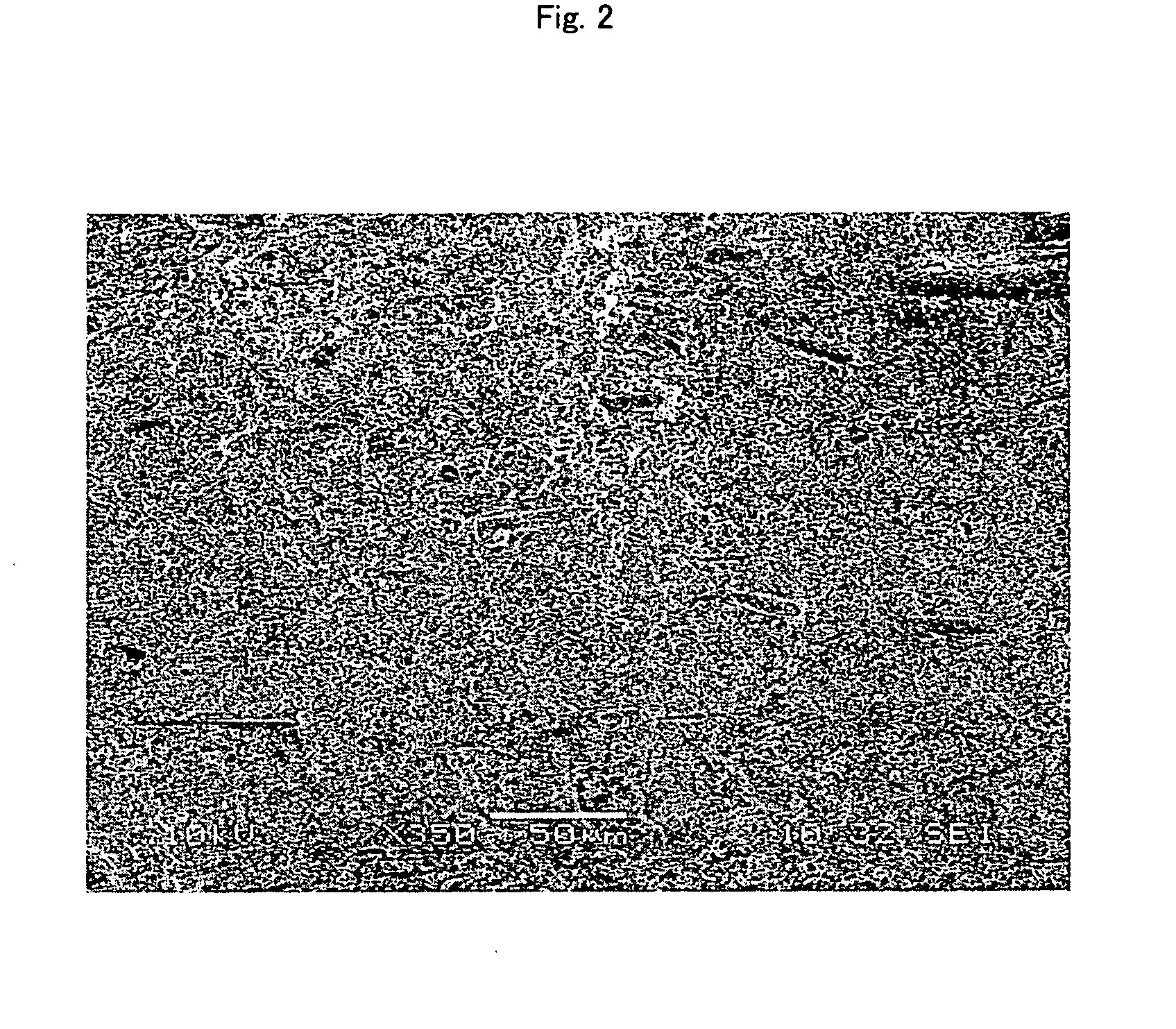Honeycomb structure
a honeycomb and structure technology, applied in the field of honeycomb structure, can solve the problems of increasing the thickness of the alumina layer, not significantly increasing the contact potential, and undesirably heightening the pressure loss
- Summary
- Abstract
- Description
- Claims
- Application Information
AI Technical Summary
Benefits of technology
Problems solved by technology
Method used
Image
Examples
example 1
[0059] The process of example 1 mixed 40% by weight of γ-alumina particles (average particle diameter: 2 μm) as the inorganic particles, 10% by weight of silica alumina fibers (average fiber diameter: 10 μm, average fiber length: 100 μm, aspect ratio: 10) as the inorganic fibers, and 50% by weight of silica sol (solid content: 30% by weight) as the inorganic binder to give a mixture. The process added 6 parts by weight of methylcellulose as an organic binder and small amounts of a plasticizer and a lubricant with stirring to 100 parts by weight of the mixture and sufficiently kneaded the whole mixed composition. The mixed composition was extrusion molded by an extruder to a raw molded body.
[0060] The raw molded body was sufficiently dried with a microwave dryer and a hot air dryer and was kept at 400° C. for 2 hours for degreasing. The degreased molded object was fired at 800° C. for 2 hours to give a square-pillar honeycomb unit 11 (34.3 mm×34.3 mm×150 mm) having a cell density of...
examples 2 to 7
[0062] The honeycomb structures 10 were produced in the same manner as in the example 1 except for becoming the shapes shown in Table 1. The shapes of the honeycomb unit assemblies of the examples 2, 3 and 4 are respectively shown in FIGS. 3(b), (c) and (d), and the shapes of the honeycomb unit assemblies of the examples 5, 6 and 7 are respectively shown in FIG. 4(a), (b) and (c). In the example 7, the honeycomb structure 10 is integrally molded, and a joining process and a cutting process were not performed.
examples 8 to 14
[0063] The honeycomb units 11 were produced in the same manner as in the example 1 except for using titania particles (average particle diameter: 2 μm) as the inorganic particles and becoming the shapes shown in Table 1. Then, the honeycomb structures 10 were produced in the same manner as in the example 1 except for using the titania particles (average particle diameter: 2 μm) as the inorganic particles of the seal layer and coating layer. The shapes of the honeycomb unit assemblies of the examples 8 to 11 are respectively the same as those of FIGS. 3(a) to (d), and the shapes of the honeycomb unit assemblies of the examples 12 to 14 are respectively the same as those of FIG. 4(a) to (c). In the example 14, the honeycomb structure 10 is integrally molded.
PUM
| Property | Measurement | Unit |
|---|---|---|
| area | aaaaa | aaaaa |
| surface roughness Rz | aaaaa | aaaaa |
| surface roughness Rz | aaaaa | aaaaa |
Abstract
Description
Claims
Application Information
 Login to View More
Login to View More - R&D
- Intellectual Property
- Life Sciences
- Materials
- Tech Scout
- Unparalleled Data Quality
- Higher Quality Content
- 60% Fewer Hallucinations
Browse by: Latest US Patents, China's latest patents, Technical Efficacy Thesaurus, Application Domain, Technology Topic, Popular Technical Reports.
© 2025 PatSnap. All rights reserved.Legal|Privacy policy|Modern Slavery Act Transparency Statement|Sitemap|About US| Contact US: help@patsnap.com



